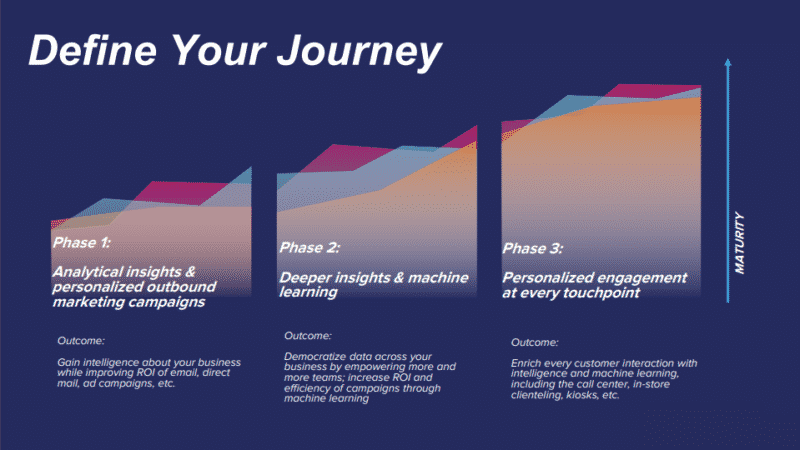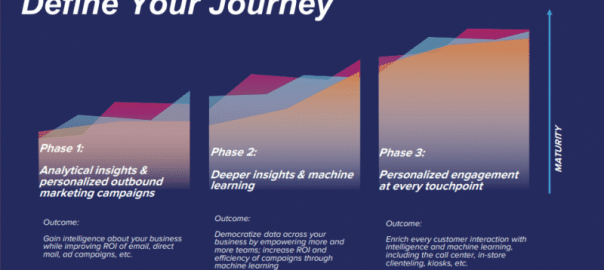What makes identifying use cases so difficult has much to do with generic and disjointed experiences.
Use cases show brands how consumers interact with their products and services. They highlight the individual experiences of customers so companies can better connect with them.
Unfortunately, it’s often difficult to organize and manage use cases, especially in large organizations.
“Now a lot of companies that we talked to struggle with where to begin in terms of how to prioritize and even identify what their use cases are,” said Karen Wood, Senior Director, Product Marketing at Acquia, in her MarTech presentation. “So, we always recommend starting to look at use cases in the realm of how would that impact the end consumer.”
She added, “So rather than thinking about the different teams in the different brands that are leveraging the use cases, what is the experience going to be like for the end consumer?”
What makes identifying use cases so difficult has much to do with generic and disjointed experiences, says Wood. Multiple departments, channels, and teams often lead to siloed consumer experiences.
“So, rather than thinking about it as the consumer flows through the journey across many different experiences, it’s really each individual siloed team or department that’s powering the discrete and unique experiences,” said Wood. “Our recommendation as we talk about use cases is to think about it cohesively across teams across touchpoints, and really what it’s like for that consumer at the receiving end.”
Take the data journey
Wood identifies three phases marketers should follow to take their data capabilities from analysis to full personalization.

- Phase 1: Using analytical insights and personalized marketing campaigns to give consumers information about your business.
- Phase 2: Gaining deeper insights from CDP platforms, which allows teams across the board to increase ROI.
- Phase 3: Providing personalized engagement at each customer touchpoint
“Personalized digital experiences, experiences that are driven by trusted data that engage seamlessly with one another, that address use cases that your customers care about, those experiences can drive meaningful results for your business,” said Christopher Cummings of Precisely in a separate MarTech session. “Brands across the board need to strengthen their customer engagement channels.”
Snapshot: Customer Data Platforms
Marketers today face increasing pressure to provide a unified experience to customers across many channels. And these avenues are growing each day. That’s why customer data platforms, or CDPs, have become more prevalent than ever. These help marketers identify key data points from customers across a variety of platforms, which can help craft cohesive experiences.
Cisco’s Annual Internet Report found that internet-connected devices are growing at a 10% compound annual growth rate (CAGR) from 2018 to 2023. COVID-19 has only sped up this marketing transformation. Technologies are evolving at a faster rate to connect with customers in an ever-changing world.
Each of these interactions has something important in common: they’re data-rich. Customers are telling brands a little bit about themselves at every touchpoint, which is invaluable data. What’s more, consumers expect companies to use this information to meet their needs.
Meeting customer expectations, breaking up these segments, and bringing them together can be demanding for marketers. That’s where CDPs come in. By extracting data from all customer touchpoints — web analytics, CRMs, call analytics, email marketing platforms, and more — brands can overcome the challenges posed by multiple data platforms and use the information to improve customer experiences. Learn more here.
The post Here’s a data-driven strategy for better understanding use cases appeared first on MarTech.
(38)











